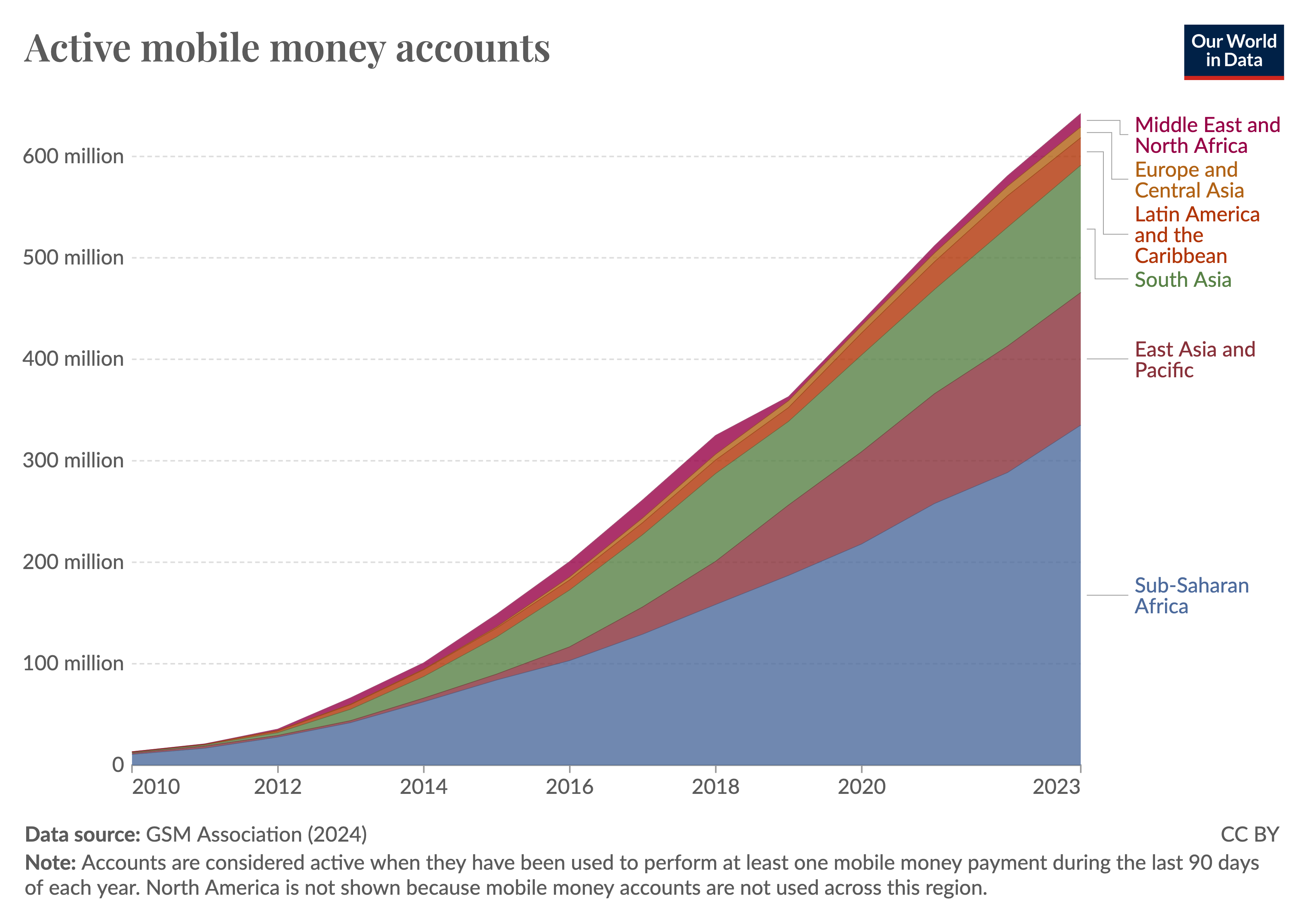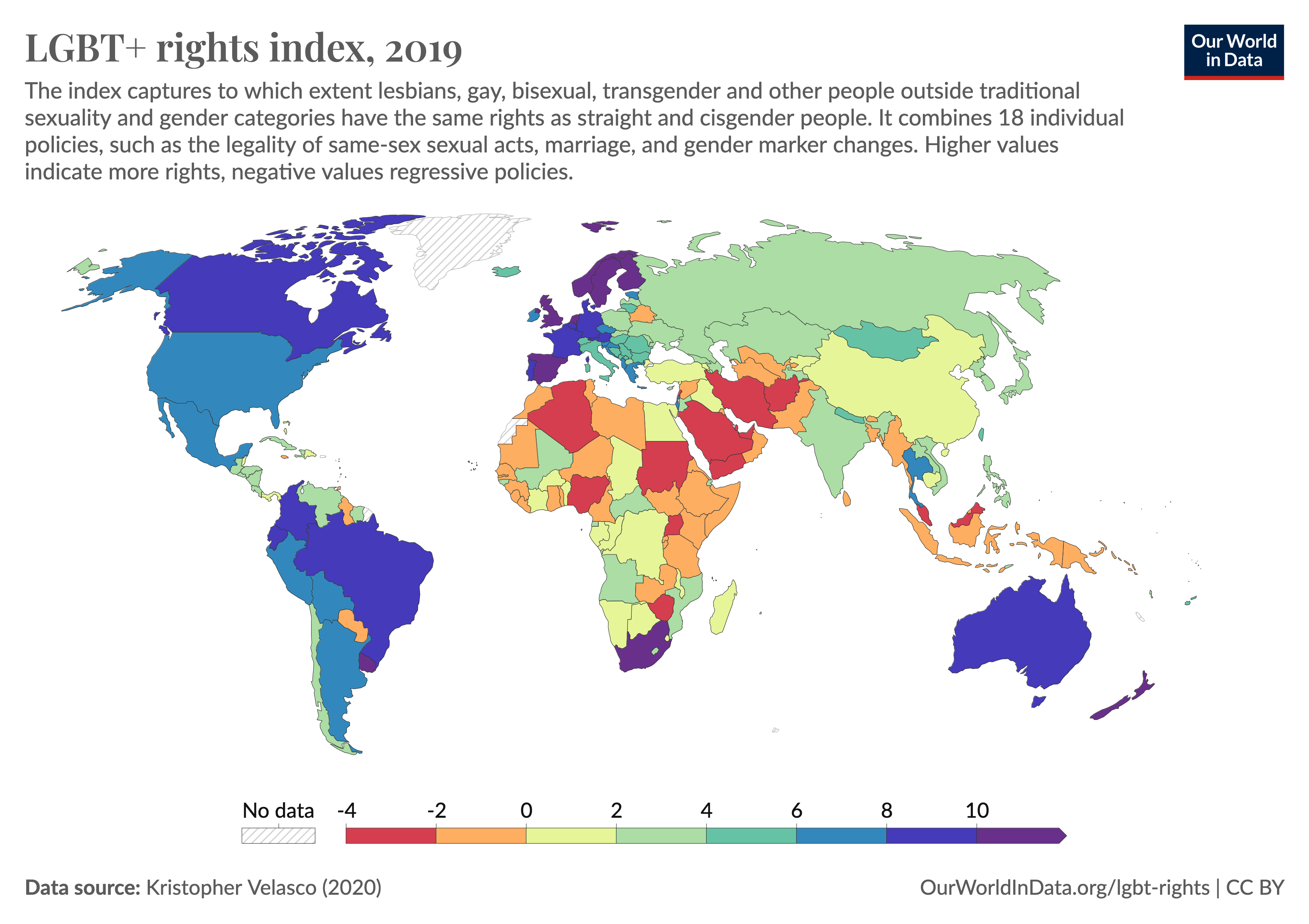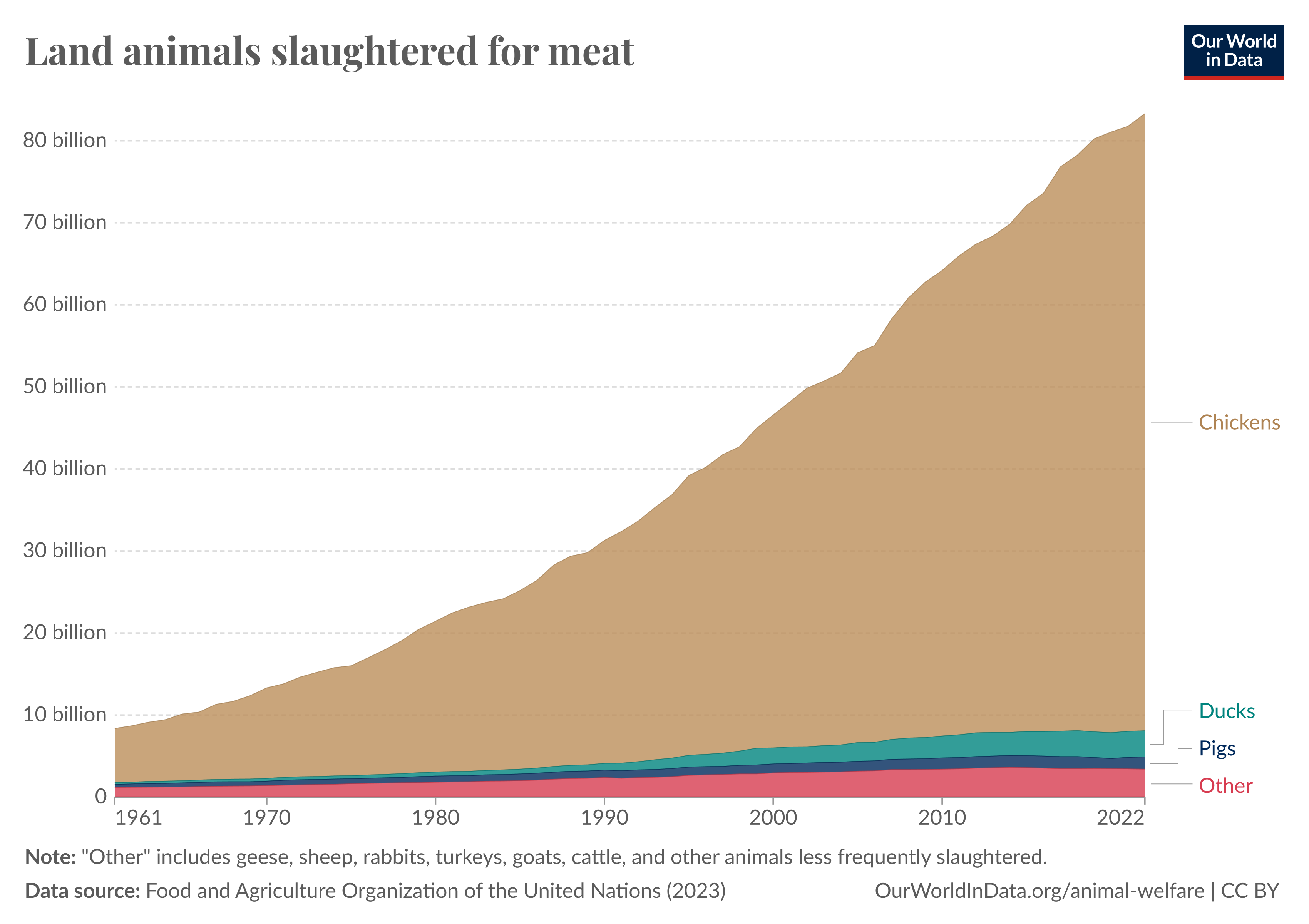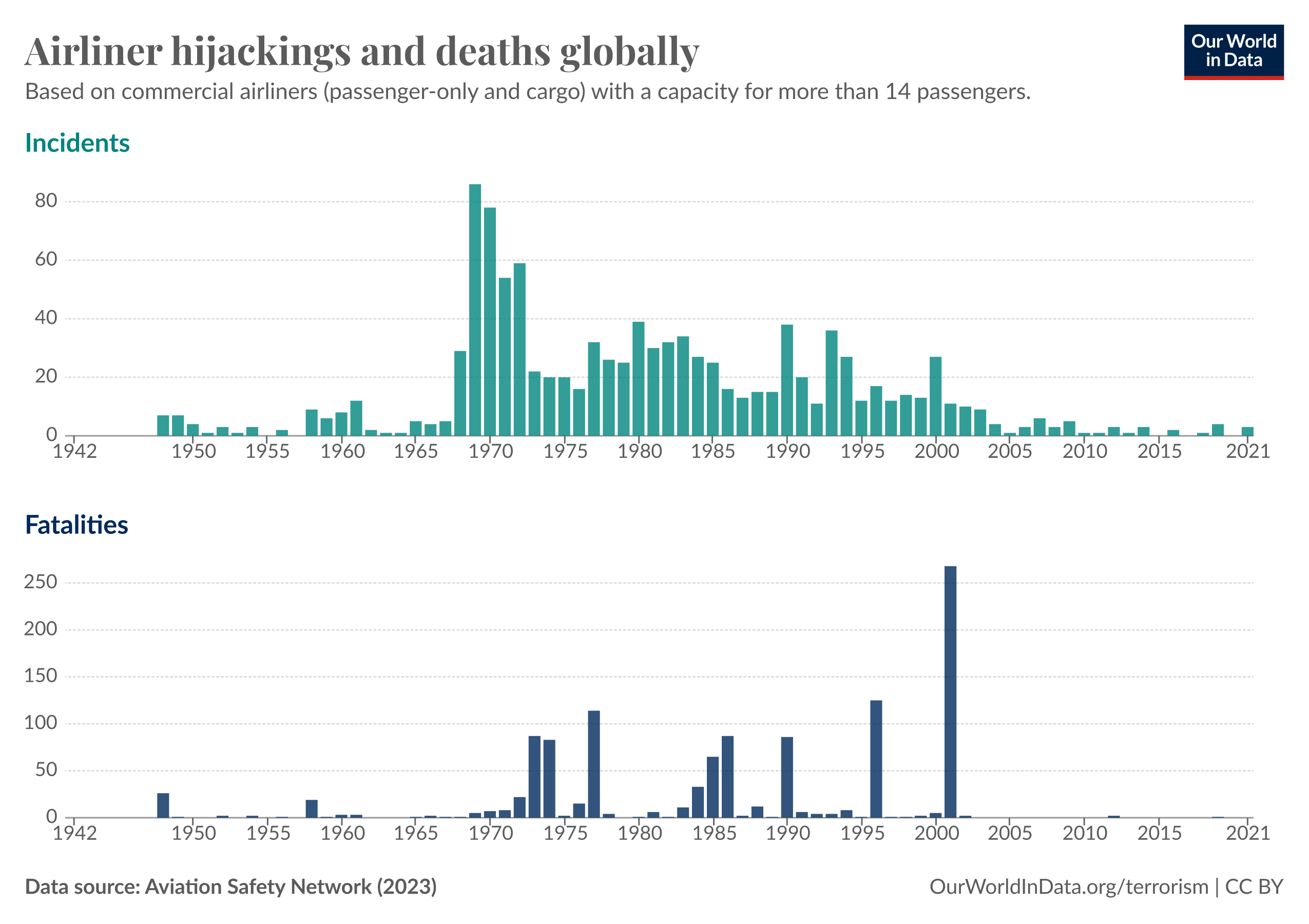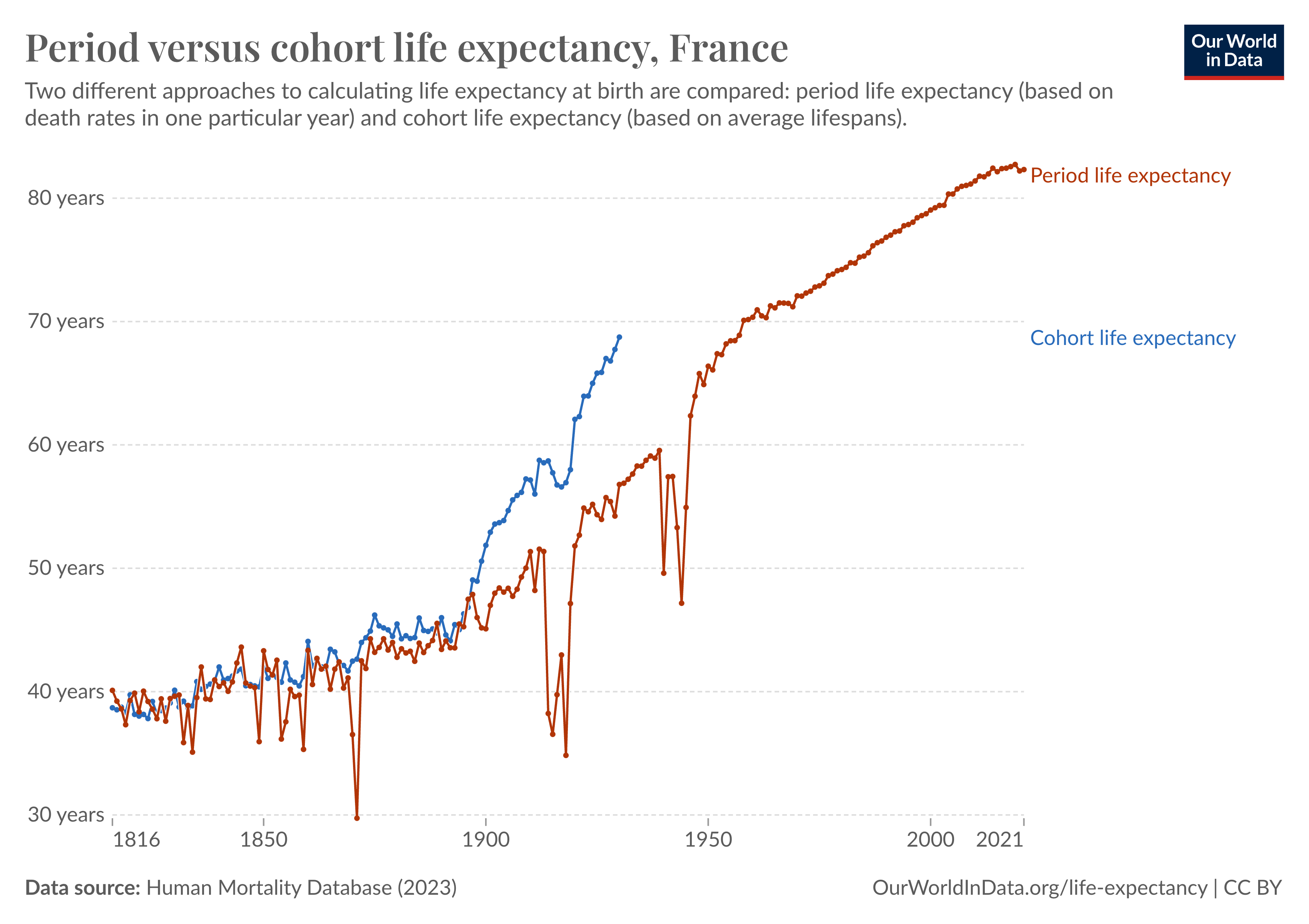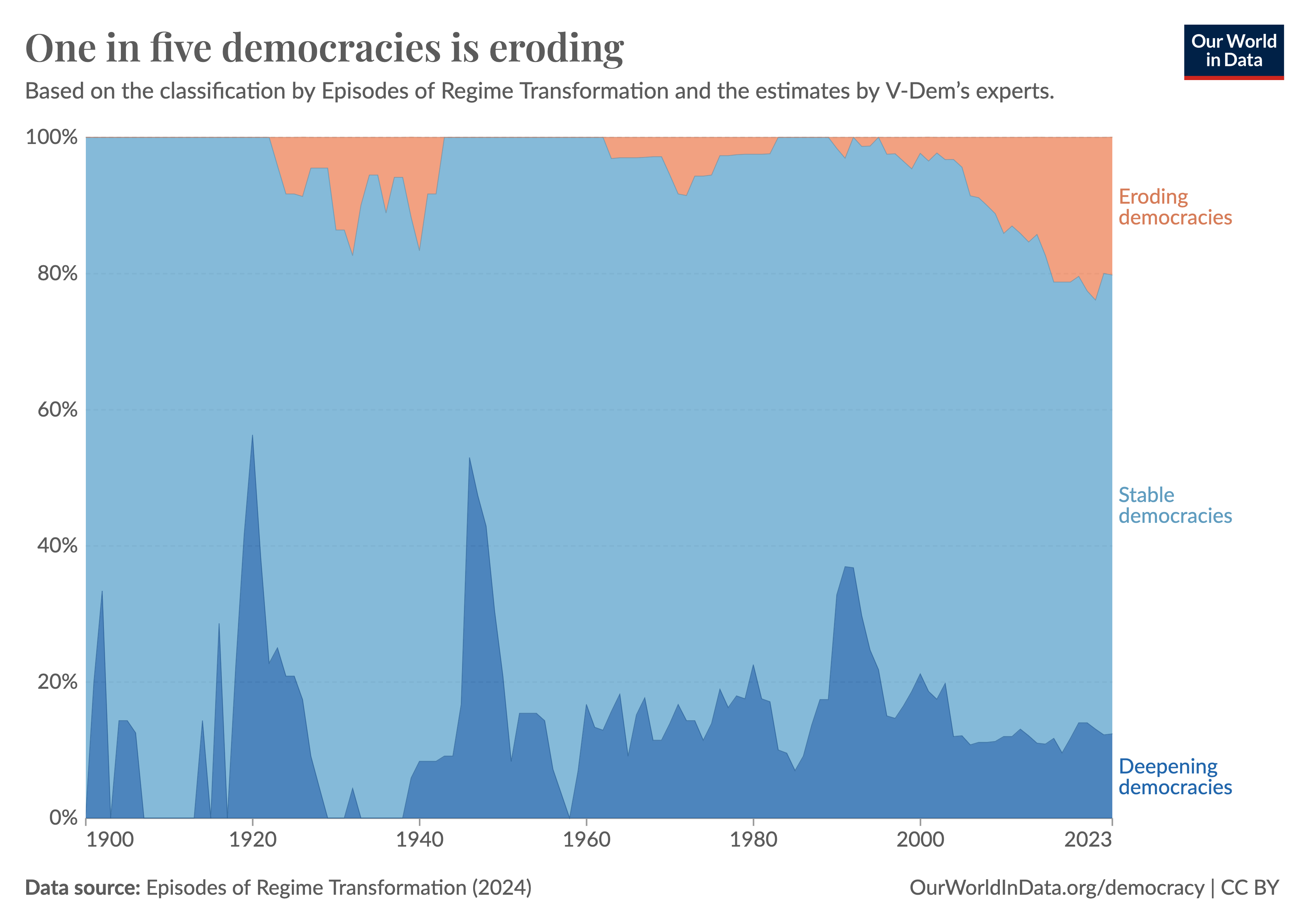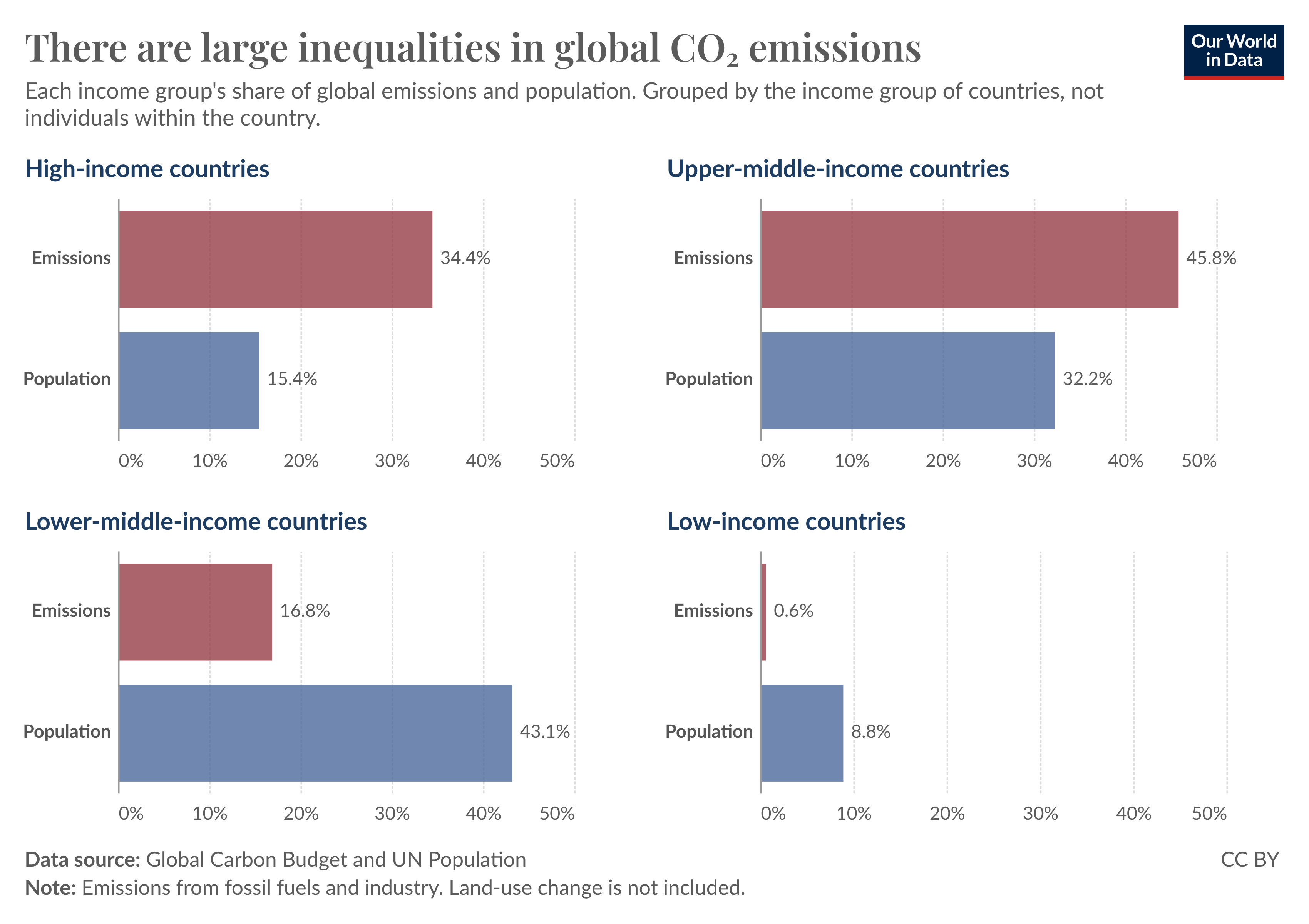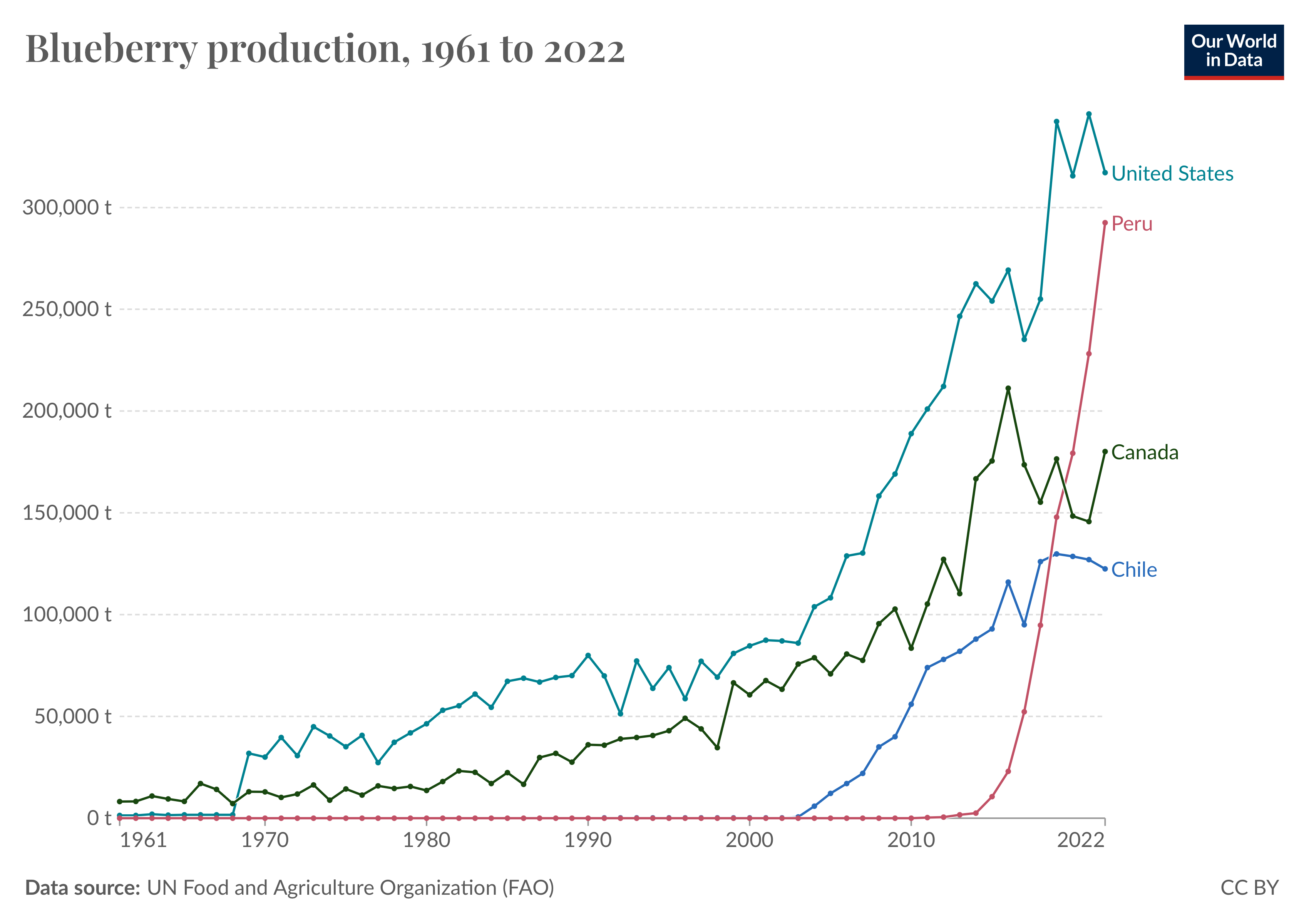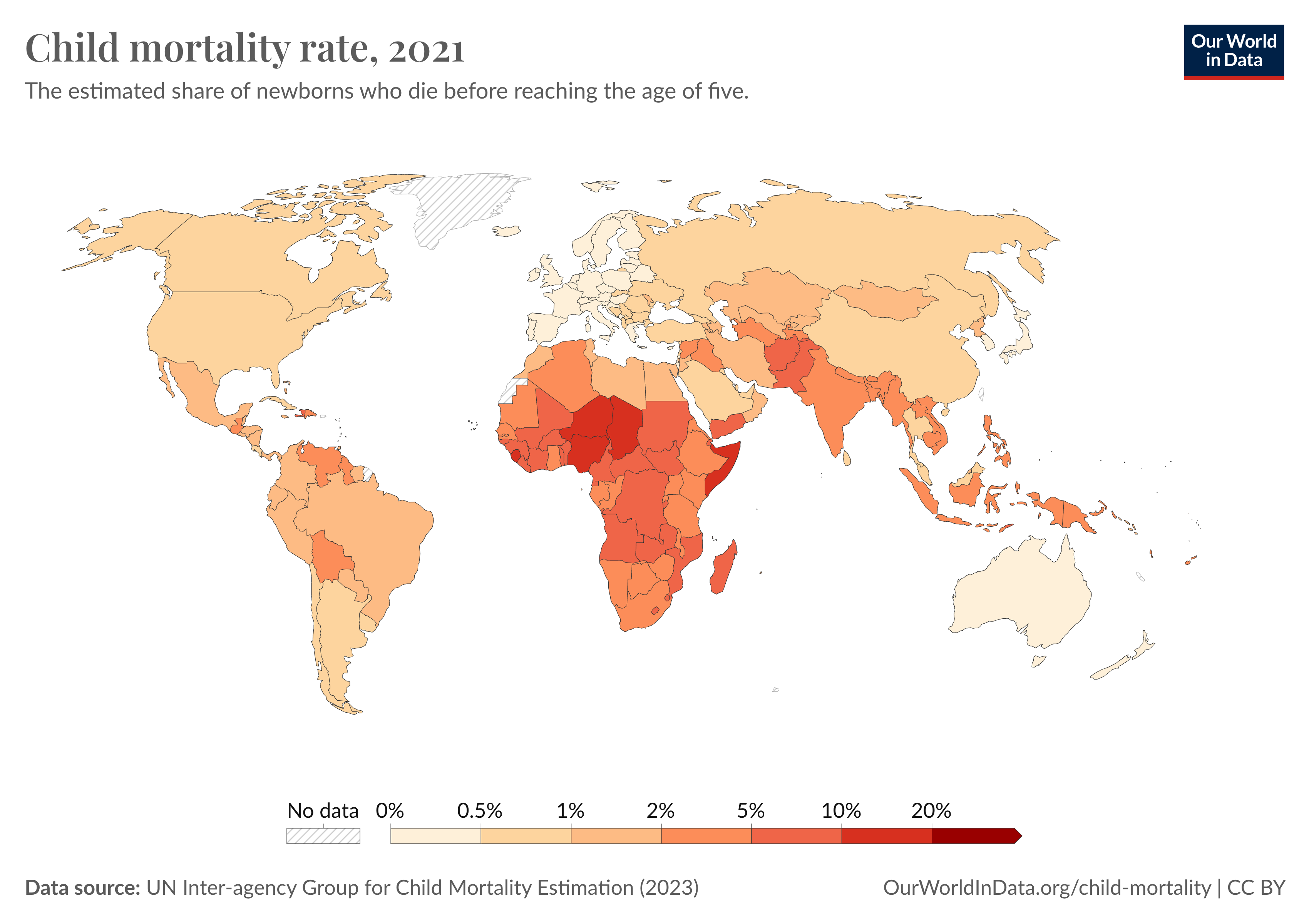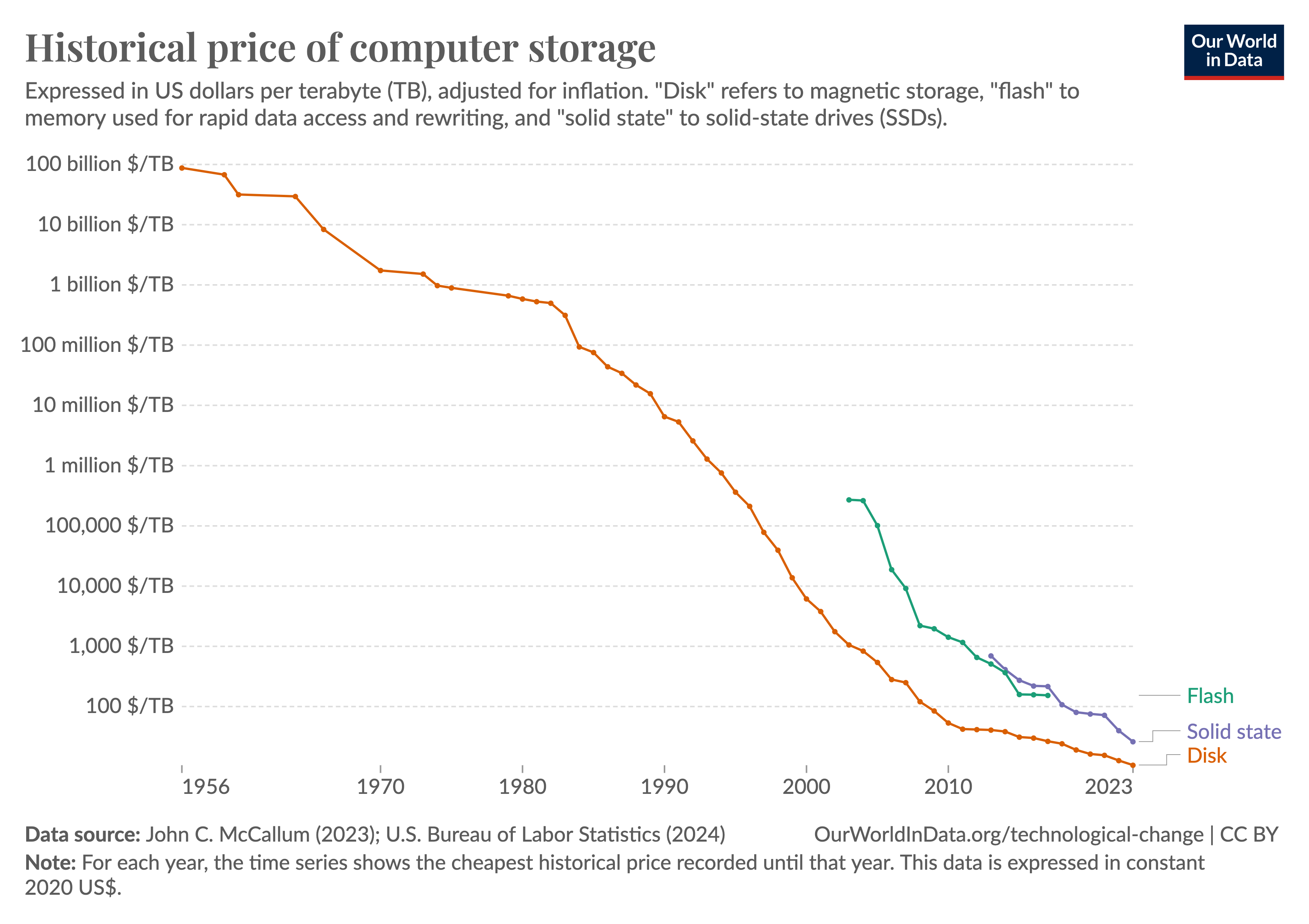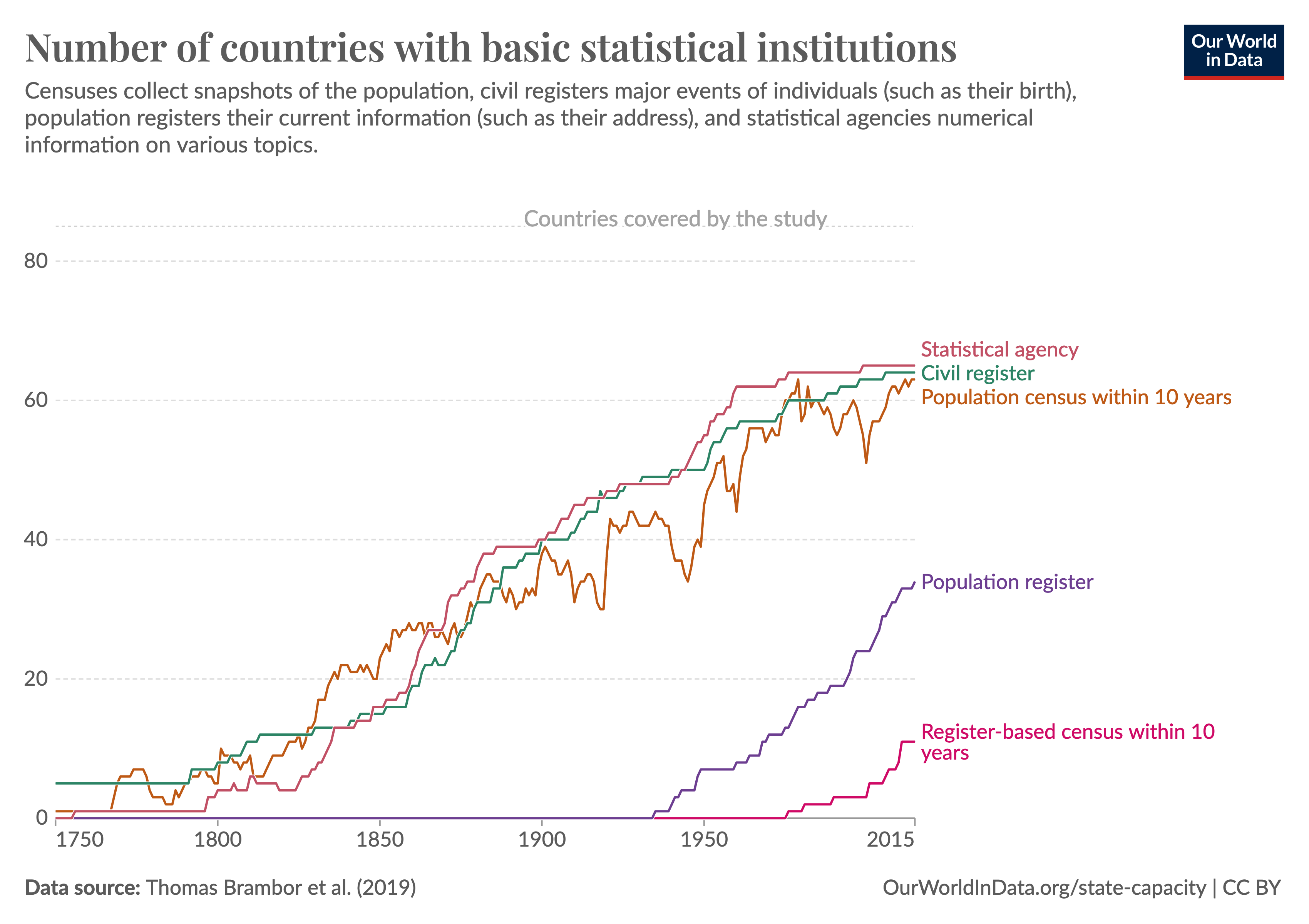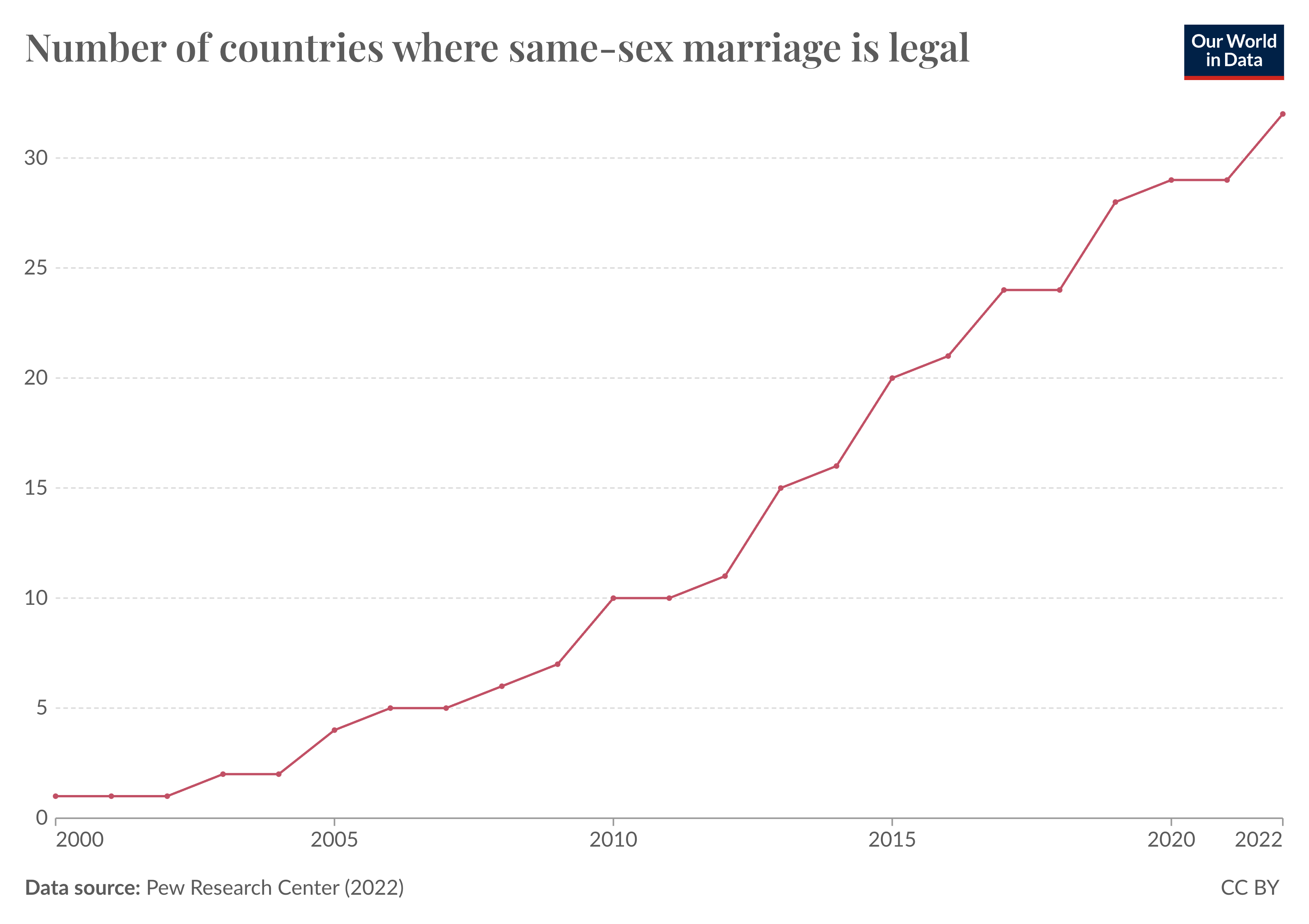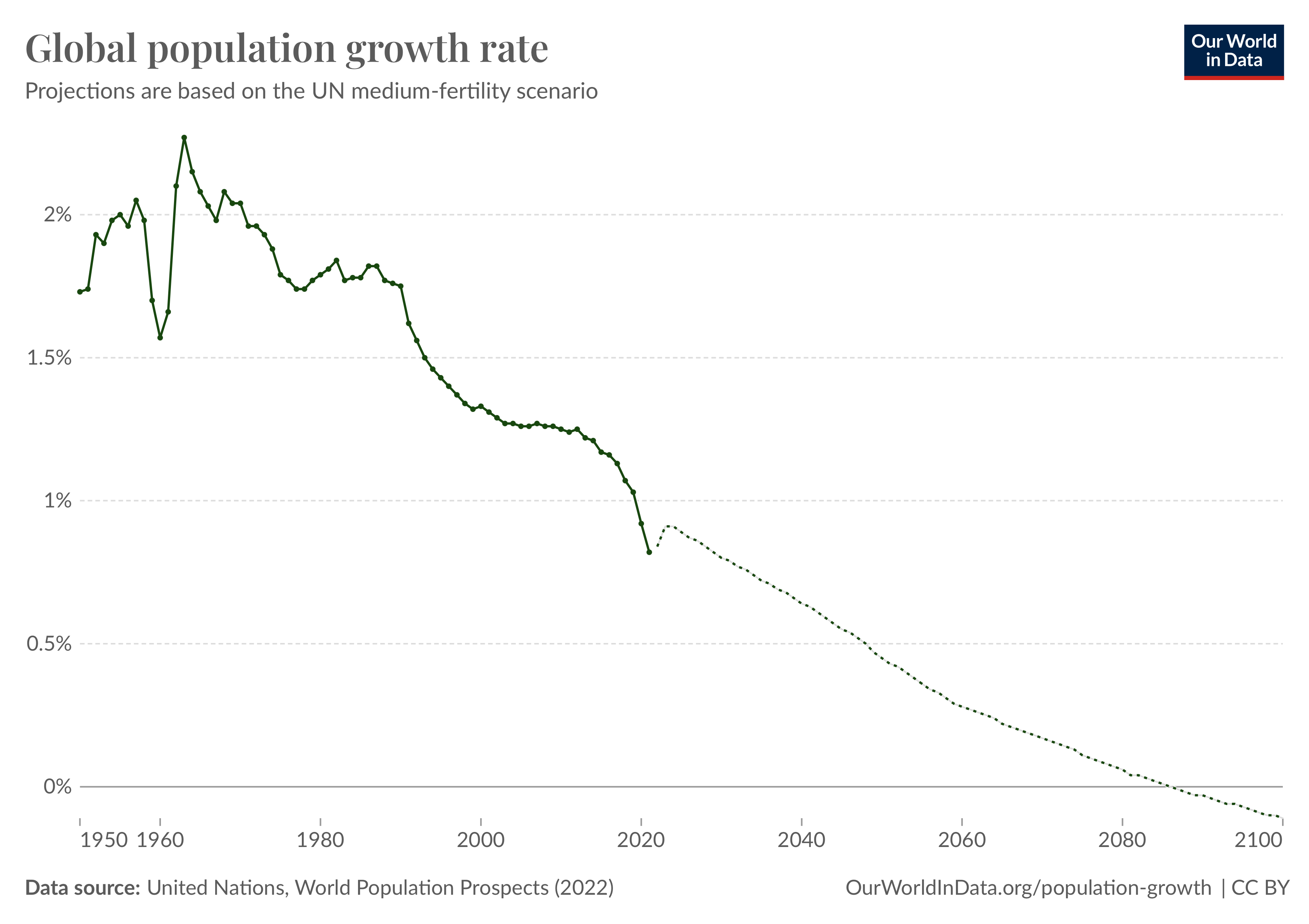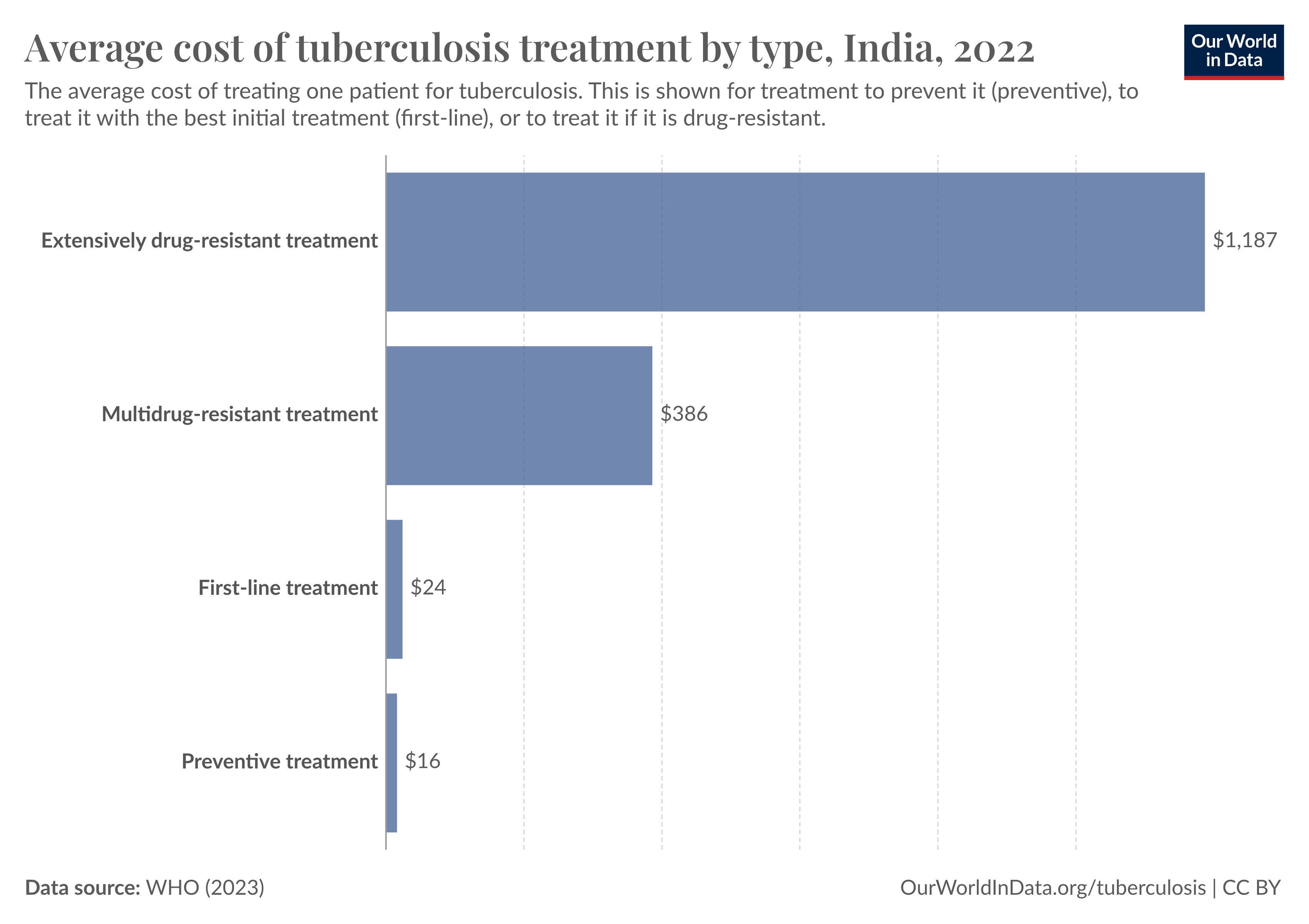Data Insights
Bite-sized insights on how the world is changing, written by our team.
Homicide rates have declined dramatically over the centuries
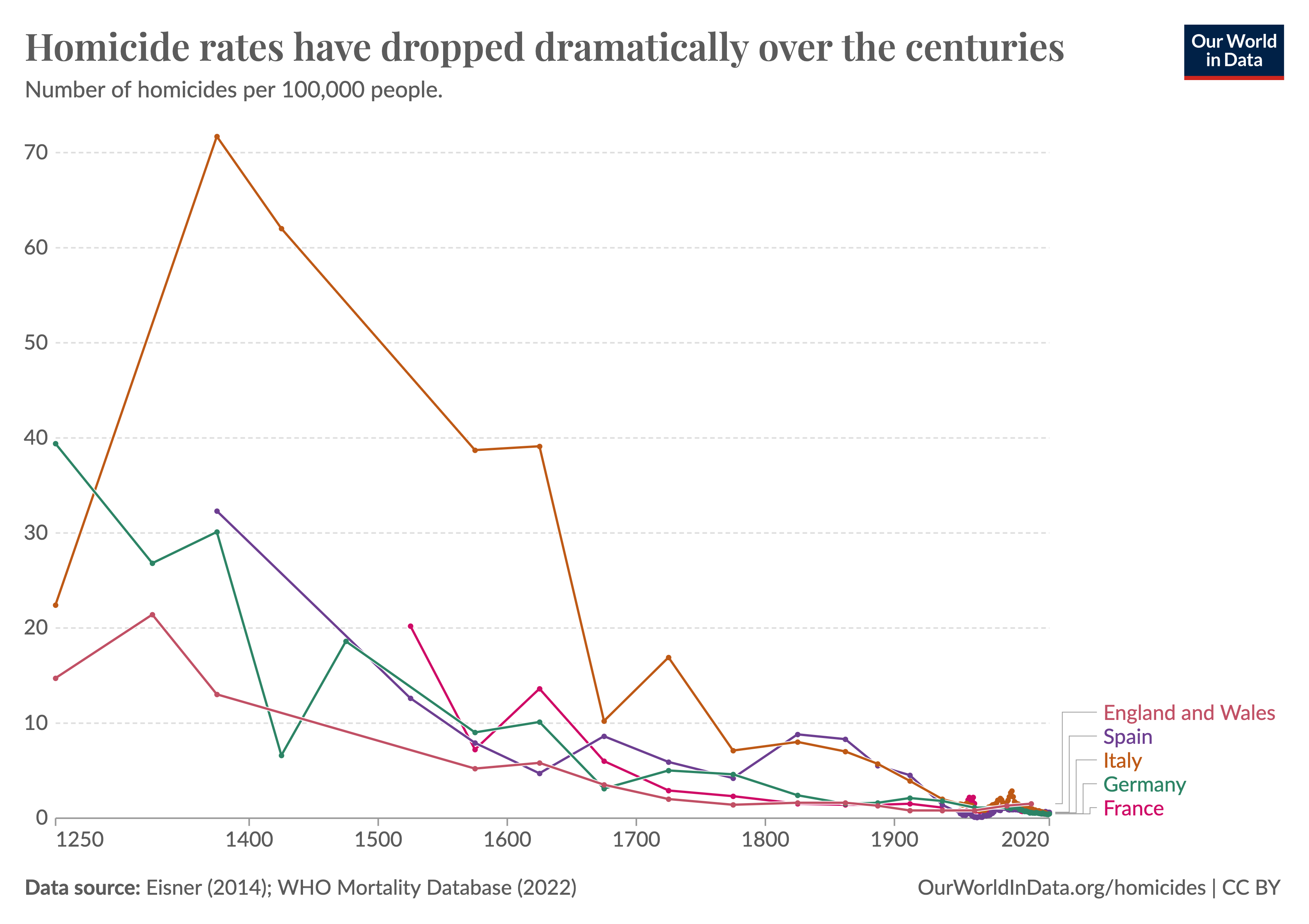
It is hard to imagine just how violent the past was.
The chart shows that in the 13th and 14th centuries, based on data from researcher Manuel Eisner, homicide rates across Western Europe were higher than 10 murders per 100,000 people in a year. In Italy, the rate was as high as 70 murders per 100,000 people.
Since then, murder rates have fallen significantly across these countries. According to data from WHO’s Mortality Database, their homicide rate is now around 1 murder per 100,000 people — less than a tenth of what it used to be.
Despite these improvements, homicides remain a common cause of death globally and are even a leading cause in some countries. But significant and lasting reductions in violence between people are possible.
Which countries have fertility rates above or below the “replacement level”?
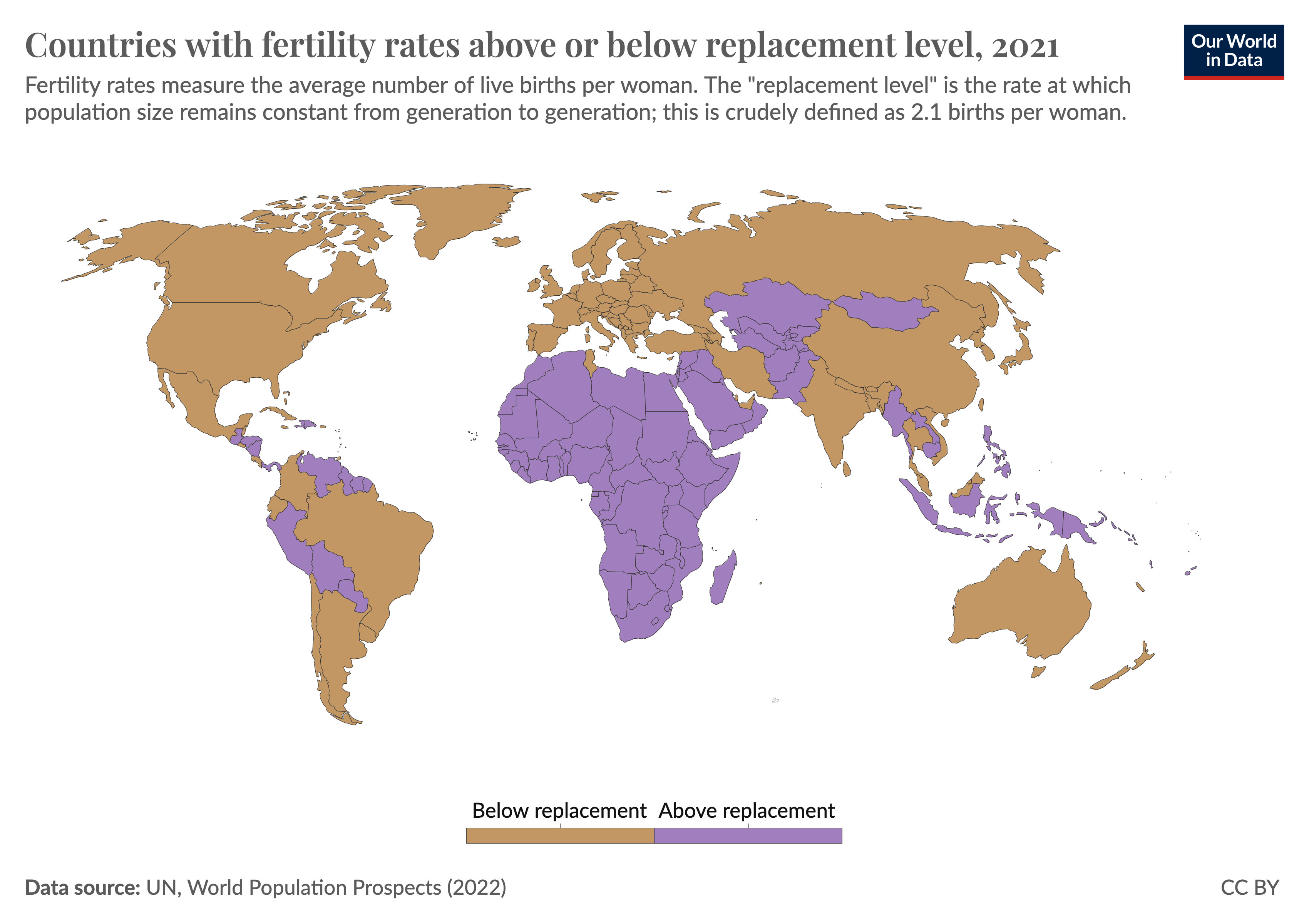
Fertility rates — which measure the average number of children per woman — have been falling worldwide. Since 1950, global fertility rates have halved, from almost 5 children per woman to 2.3.
As a result, global population growth has slowed dramatically, and many countries' populations are expected to decline by the end of the century.
This is because fertility rates in many countries have fallen below the “replacement level”. This is the level at which a population replaces itself from one generation to the next. It’s generally defined as a rate of 2.1 children per woman.
The map shows which countries had fertility rates above and below this level in 2021. This is based on estimates from the UN World Population Prospects.
Core LGBT+ rights are becoming more protected in some countries
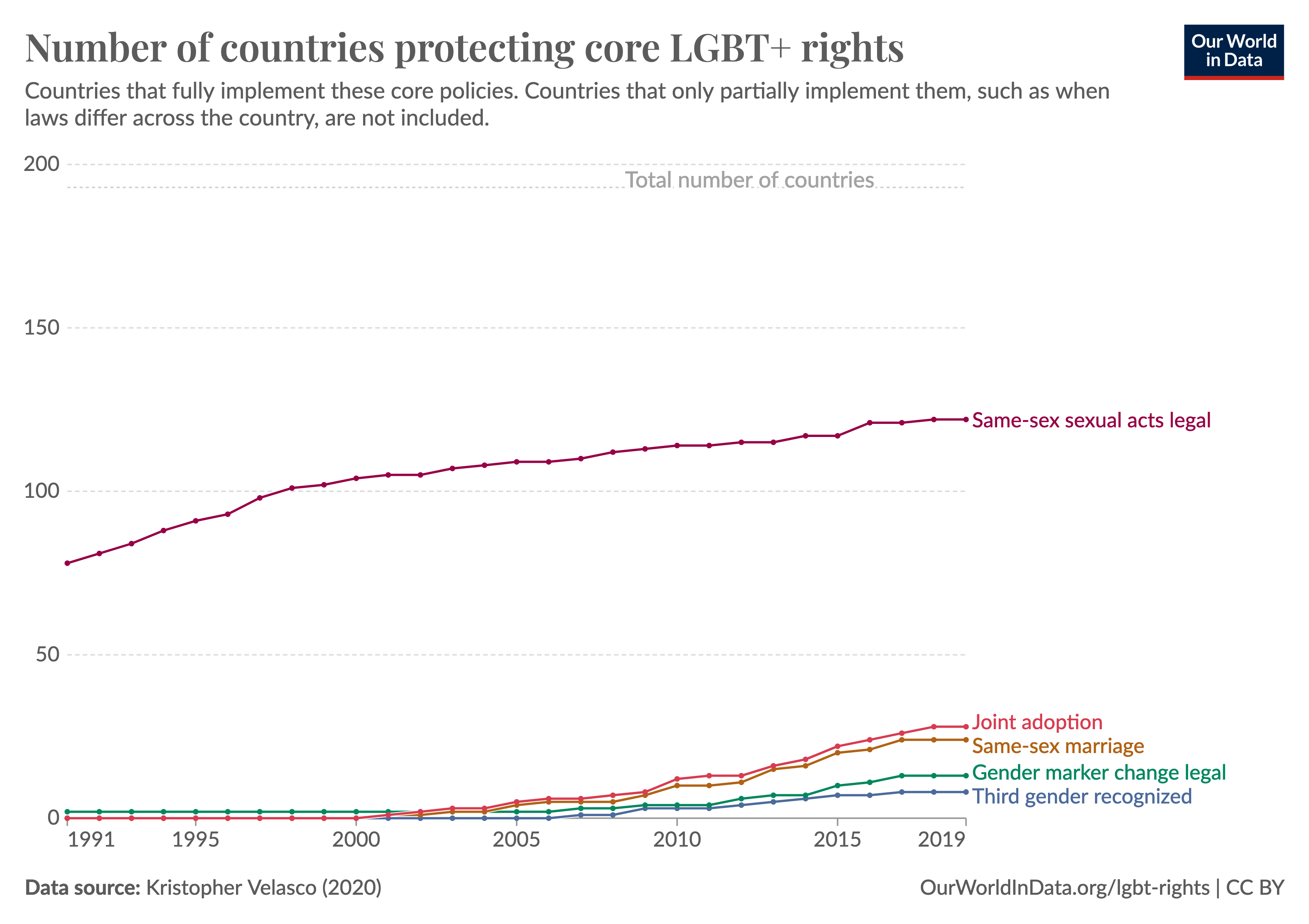
Important LGBT+ rights are becoming better protected in some countries, according to the work of researcher Kristopher Velasco.
The chart shows that in the early 1990s, very few countries protected LGBT+ rights beyond allowing same-sex sexual acts. Back then, no countries allowed same-sex partners to marry or adopt children, none recognized a third gender, and only two made it easy to change one’s gender marker legally.
Over the last few decades, more countries have offered and protected these rights. Most countries have now legalized same-sex relationships, and same-sex marriage, adoption, third-gender recognition, and gender marker changes are becoming more common. However, most countries still do not recognize these important rights.
Many countries are “leapfrogging” landlines and going straight to mobile phones
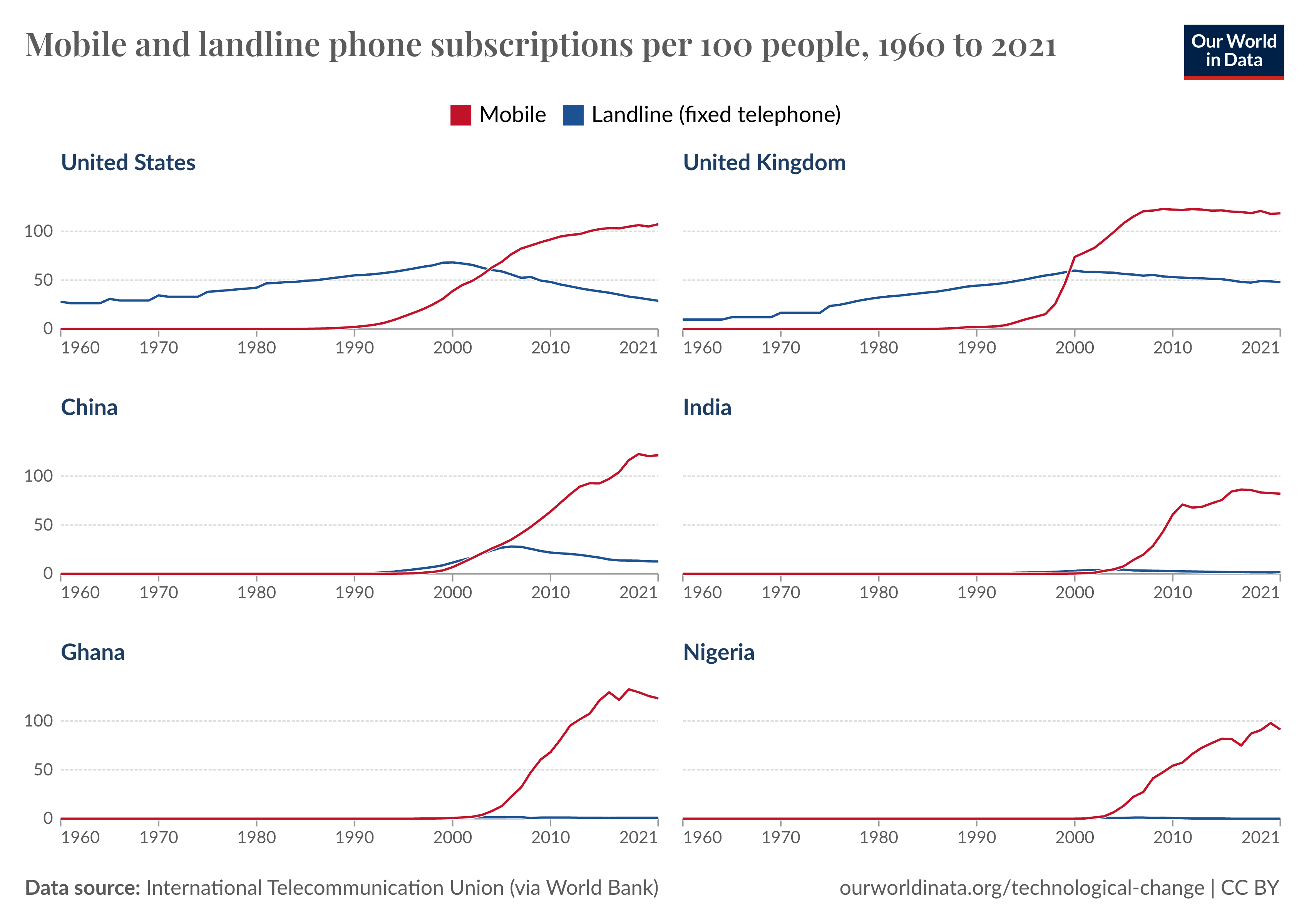
The concept of “leapfrogging” is popular in development. It suggests that lower-income countries can, as they develop, skip intermediate technologies or systems to go straight to the modern equivalent.
One example of this is the use of landlines and mobile phones.
The landline telephone was invented in 1876 and became a dominant form of communication across Europe and North America. As you can see in the chart, it was increasingly adopted in the United States and the United Kingdom throughout the 20th century.
However, mobile phone adoption increased rapidly in the 1990s, and landlines have declined since the millennium. Mobile phones have become a substitute for landlines.
Many countries, however, have almost skipped the adoption of landlines entirely. India, Ghana, and Nigeria are good examples: landline subscriptions have remained extremely low, and instead, mobile phone adoption has exploded.
Deaths from tetanus have been reduced massively
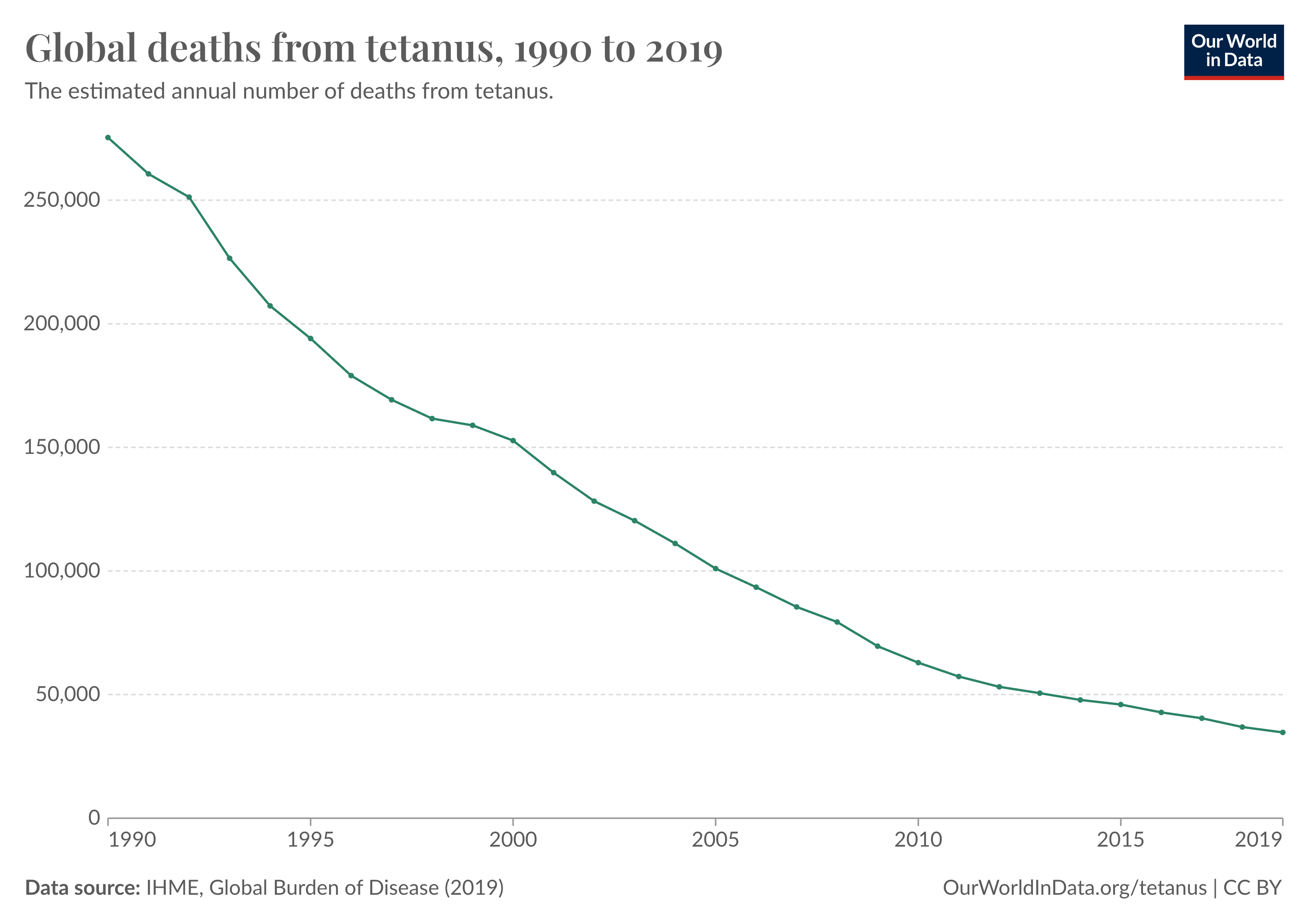
Tetanus is a bacterial disease that causes paralysis and can lead to death.
Globally, it was estimated to kill more than 250,000 people each year in the early 1990s. Most of these deaths were in children.
By 2019, annual deaths had fallen to less than 35,000.
The rollout of the combined vaccine against diphtheria, tetanus, and pertussis (DTP) among children has been crucial in driving this.


